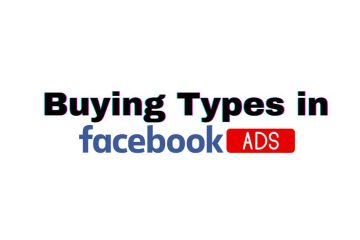Marketing attribution plays a crucial role in understanding the impact of various marketing channels on a customer’s decision-making process. However, traditional attribution methods have limitations, especially in today’s digital landscape where customers interact with brands across multiple channels and devices. This is where the power of artificial intelligence (AI) comes into play. AI-powered marketing attribution models leverage machine learning algorithms to provide a more accurate and comprehensive view of how marketing touchpoints contribute to conversions. In this blog post, we will explore the challenges of traditional attribution methods, the advantages of AI-powered models, best practices for implementation, and how to create an action plan for AI-powered attribution.
The Challenges of Traditional Marketing Attribution Methods
Traditional attribution models, such as first-touch, last-touch, and multi-touch, have limitations that hinder their ability to provide a complete understanding of a customer’s journey. One major challenge lies in tracking offline conversions, as many customers still make purchases through offline channels. Additionally, traditional methods struggle with cross-device attribution, as customers often use multiple devices before making a purchase. Moreover, these models often rely on rule-based heuristics that may not accurately reflect the influence of each touchpoint on a customer’s decision.
The Advantages of AI-powered Attribution Models
AI-powered attribution models leverage machine learning algorithms to overcome the limitations of traditional methods. These models can dynamically adapt to changing customer behaviors and preferences, account for factors such as seasonality and market trends, and track offline and cross-device conversions more effectively. By integrating data from various channels and devices, AI-powered models create a unified view of a customer’s journey, enabling marketers to gain deeper insights into campaign effectiveness. Furthermore, AI-powered attribution models can segment customers based on demographics, location, purchase history, and preferences, allowing for personalized and targeted marketing strategies.
Some examples of AI-powered attribution models include:
- Data-driven attribution: This model uses machine learning to assign credit to touchpoints based on their statistical impact on conversions. It analyzes historical data from all touchpoints across channels and devices to determine the likelihood of each touchpoint leading to a conversion.
- Algorithmic attribution: This model employs machine learning to create custom rules for assigning credit to touchpoints based on their relevance and influence on conversions. By identifying patterns and correlations among historical data, it establishes optimized rules to attribute credit accurately.
- Probabilistic attribution: This model utilizes machine learning to estimate the probability of each touchpoint’s involvement in a conversion path. By analyzing historical data from various touchpoints across channels and devices, it creates a probabilistic model that simulates customer behavior and path to purchase.
Read Also: AI in Online Advertising: The Future of Creative Automation
Best Practices for Implementing AI-powered Attribution
Implementing AI-powered attribution requires careful planning and execution. Here are some best practices to ensure successful implementation:
- Define Business Goals and Objectives: Clearly articulate your marketing objectives and align them with your overall business goals. Determine how you measure success and ensure your marketing goals are in line with the organization’s broader strategy.
- Collect and Integrate Data from Multiple Sources: To implement AI-powered attribution effectively, gather and integrate data from multiple sources across channels and devices. Ensure the accuracy, completeness, consistency, and compliance of your data with privacy regulations such as GDPR and CCPA.
- Choose the Right AI-powered Attribution Model: Consider the complexity of your customer journey, the availability and quality of your data, the desired level of granularity in analysis, and the implementation costs when selecting the appropriate AI-powered attribution model for your business.
- Test and Validate the Attribution Model: Before deploying the AI-powered model, rigorously test and validate it. Compare its performance with existing models, if any, and evaluate its accuracy, reliability, and scalability using A/B testing or historical data.
- Continuously Monitor and Optimize: AI-powered attribution is an ongoing process. Continuously monitor the performance of your model, identify areas for improvement, and make necessary adjustments to enhance its accuracy and reliability.
- Combine AI-powered Attribution with Human Expertise: While AI-powered models provide advanced analytical capabilities, human expertise is essential for interpreting results and making strategic decisions. Collaborate with your marketing team to derive actionable insights from AI-generated data and optimize marketing campaigns effectively.
Creating an Action Plan for AI-powered Attribution
Implementing AI-powered attribution successfully requires a well-defined action plan. Follow these steps to create an action plan:
- Define Objectives: Clearly define your marketing objectives and align them with business goals.
- Assess Data Infrastructure: Evaluate your existing data infrastructure and identify any gaps or limitations. Determine the steps needed to collect and integrate the required data effectively.
- Select the Right Attribution Model: Choose an AI-powered attribution model based on your objectives and data infrastructure, considering factors such as complexity, data availability, and granularity.
- Prepare Data: Ensure data accuracy, completeness, and compliance with privacy regulations. Cleanse and consolidate data to create a unified view of the customer journey.
- Implement and Validate the Model: Deploy your chosen AI-powered attribution model and validate its performance using historical data or A/B testing. Compare results with existing models to assess accuracy and reliability.
- Monitor and Optimize: Continuously monitor the model’s performance, analyze insights, and combine them with human expertise to drive data-driven decisions.
- Communicate and Collaborate: Share insights and findings from AI-powered attribution with key stakeholders. Collaborate with the marketing team to translate insights into actionable strategies and optimize marketing campaigns.
- Iterate and Improve: Regularly revisit objectives, assess the model’s performance, and iterate on the implementation to drive continuous improvement.
By following these steps and harnessing the power of AI-powered attribution, businesses can gain valuable insights into campaign effectiveness, optimize marketing spend, and drive revenue growth through data-driven decision-making.

Hello, I’m Ali Raza, the brain behind Digital Realm Trends.
Hailing from the vibrant world of digital marketing, I’ve honed my skills over years. Based on my experience, I’m here to unravel the complexities of digital marketing, analytics and paid marketing, crafted for individuals like you. Join me in uncovering the power of digital marketing tools and strategies, fueled by experimentation and insights.




